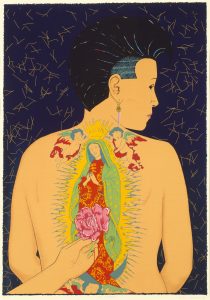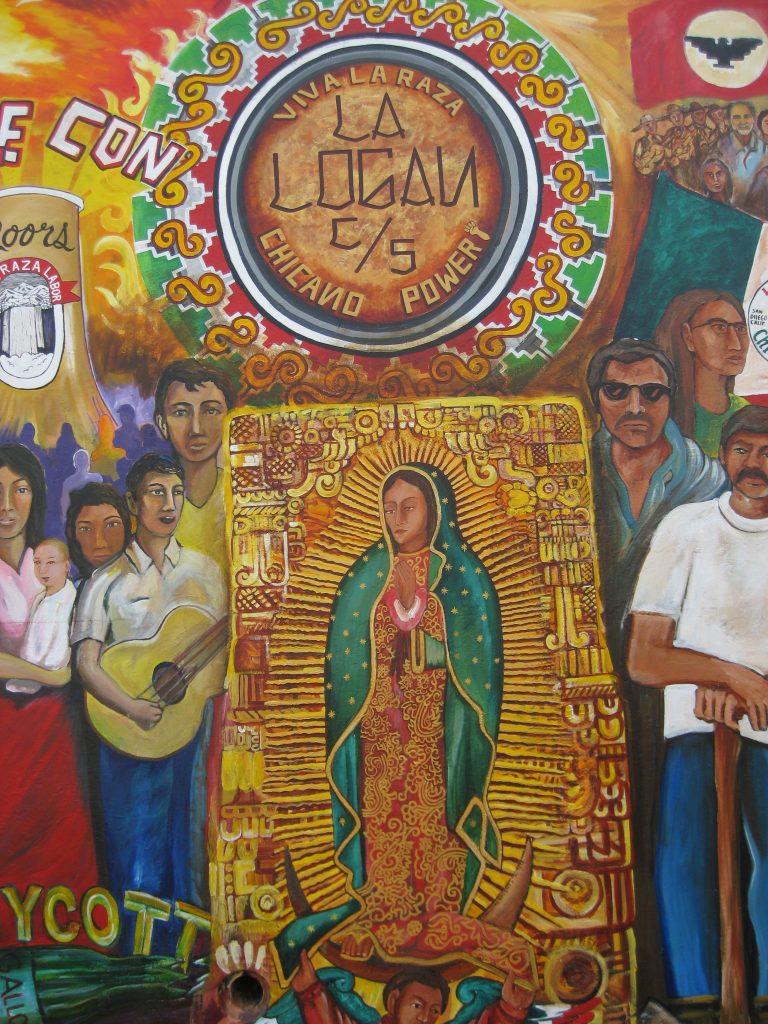Chicana Art
Chicana Art Theory

Concept 1
Rasquache is a concept within Chicana art based on the valuing of cultural production and cultural expression that might be ‘devalued’ by others. Rasquache would define important art that could be by some considered to be kitch. This art counters the pressure to produce works associated with high art. It is also a way to take part in community building and in “marking cultural space” that is not yet commodified.


Concept 2
‘In’Laketch (Nahuat language, translation in English: You Are My Other Me)
View the poem by Luiz Valdez
The Chicana scholar Laura Perez has argued that Chicana Art is a form of ‘spirit work’ that displays the attempt of the artists to inspire or provoke greater balance between who we appear to be (the public “face” we wear) and who we long to (what is truly in our “heart”). Chicana art invites the artist and the viewer to perceive and imagine differently, and promotes the idea that seeing is a learned, revealed, ever-changing, and transformative process, whether we do so through the mind, the eyes, the heart, or the spirit. Perez argues that the work of two generations of Chicana artists are centering the concept of “In’Laketch’ in visible and subtle ways with the aim of contributing a greater and more healing understanding of ourselves and of each other; to view Chicana art is to encounter the ‘self’—and for some this self is ‘known’ (those who identify as Chicano) for others that self is ‘unknown” (Those that may have heard the word for the first time this semester or have seldom engaged with the history of colonization of the U.S. South West and the American West in general.
Question(s) for Thoughtful Response
Identify one other cultural/historical group, and their artistic expression, that you are familiar with, and that remind you of the Chicana Art covered in this section of the class?
Note: Name one aspect of the cultural group you selected that is similar, and one aspect that is different/distinct.
Media Attributions
- Dolores Huerta Mural by Yreina Cervántez © Megalibrarygirl is licensed under a CC BY (Attribution) license
- La Ofrenda © Ester Hernandez is licensed under a All Rights Reserved license
- Virgin of Guadalupe mural in Chicano Park © Rpotance is licensed under a CC BY-SA (Attribution ShareAlike) license
kitch, "low class" art

